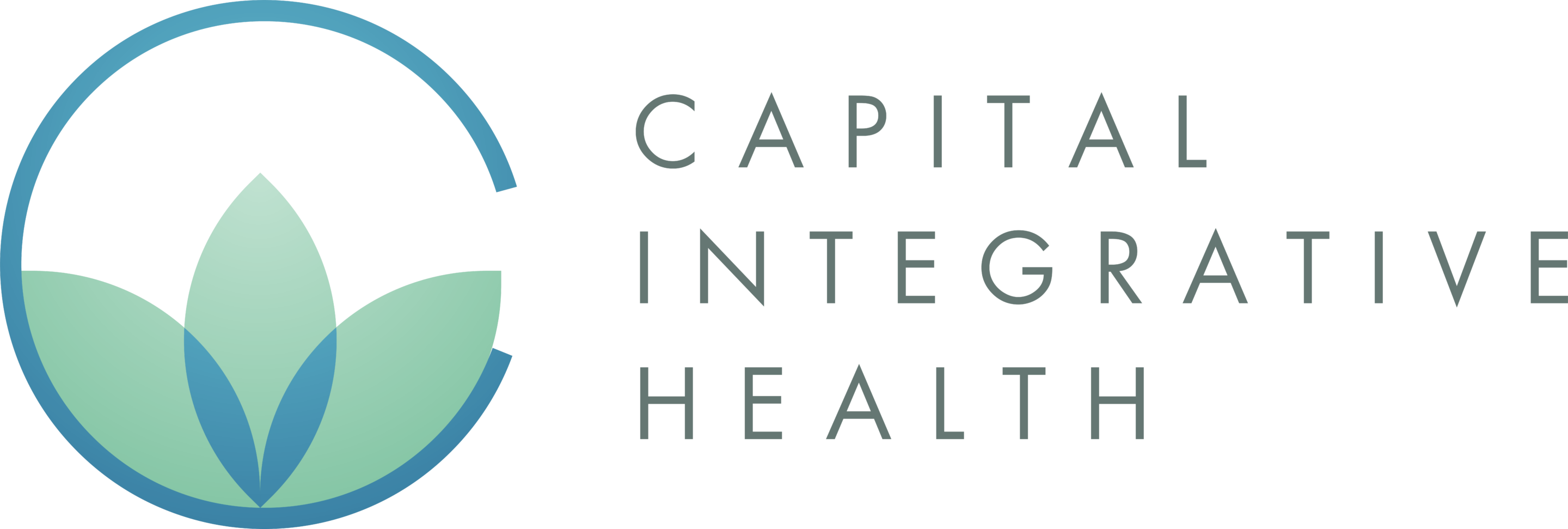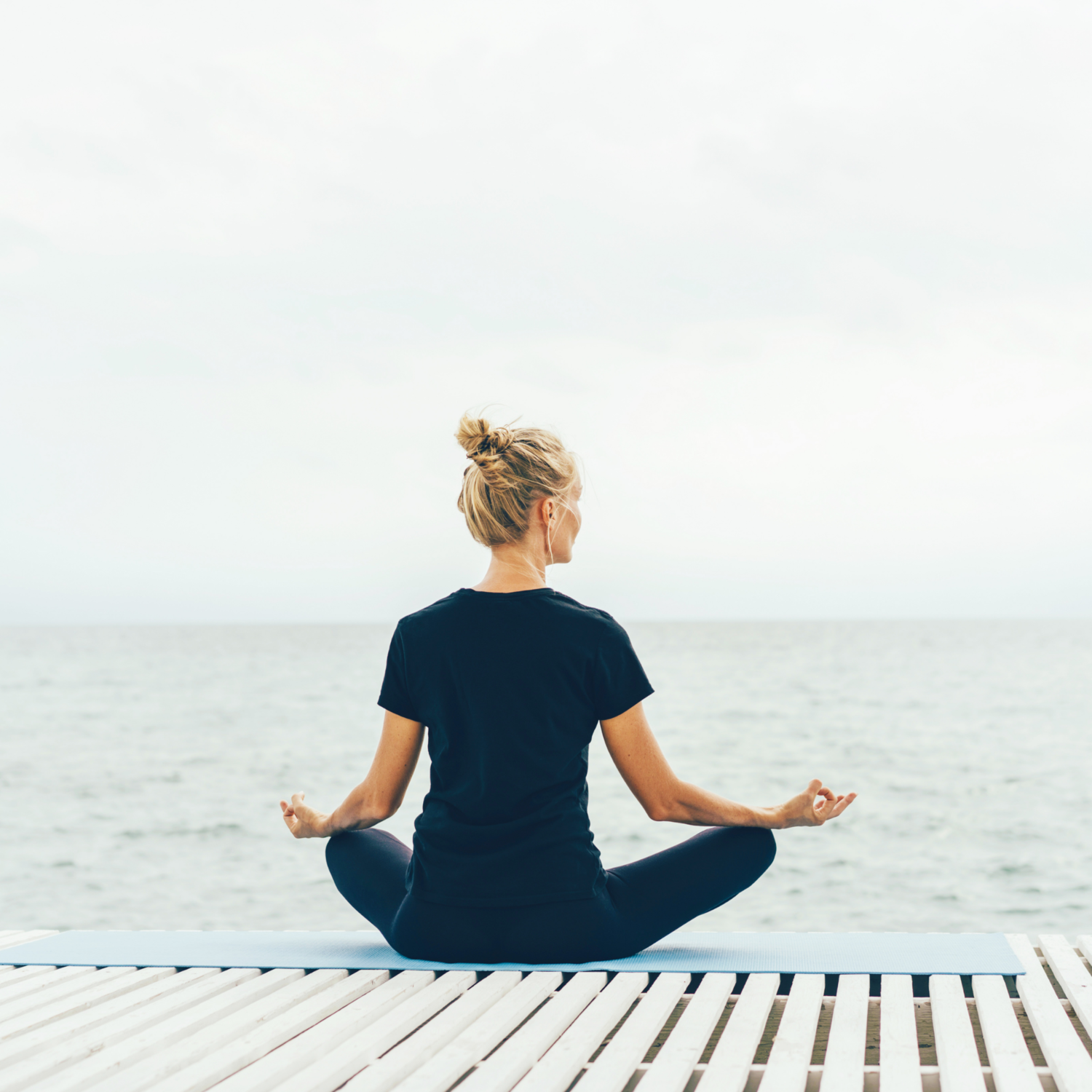Calm in 10 Minutes.
It can be hard to fit mindfulness practices like meditation into a busy, modern life. We’ve spent the last decade collecting tiny mindfulness techniques that can be practiced quickly, easily, and on the go.
We call them “micro-calm” techniques.
Most of the techniques take just a few seconds. With some practice, they make it easy (and eventually automatic) for your nervous system to shift into a calm state in the middle of a hectic day.
Below are three of our favorite “micro-calm” techniques to melt stress, relax your nervous system, and get in the moment in a matter of seconds:
1. Physiological Sigh
Take a full inhale through your nose, then force a second quick inhale at the top. Exhale long and slow through the mouth.
This technique was developed by Dr. Andrew Huberman, a neuroscientist and professor of neurobiology at Stanford.
It works by increasing the ratio of Oxygen to CO2 in your blood, triggering your body’s relaxation response.
Here’s Huberman describing and demonstrating the “physiological sigh” .
2. The 4-7-8 Breath
Inhale to the count of 4 through the nose, hold for 7 seconds, exhale for 8 seconds through the mouth.
It usually only takes 2-3x doing this breath technique to feel a shift towards calm. Deliberately extending the exhale shifts the nervous system out of “fight or flight.”
This breath was inspired by pranayama/yoga, but was coined by Dr. Weil. Here’s a video of him demonstrating.
3. “Unscrunch”
This technique comes from Michael Ashcroft , who teaches a course on expanding awareness with the Alexander Technique.
Tense all of your muscles, then let go – tuning into what it feels like to “let go.” Then, tap into that “Unscrunch” feeling again and again.
Michael explains the technique in this short article .
The world’s simplest meditation course
Most meditation advice is overcomplicated or vague.
We’re going to give you a clear, step by step method to creating a lifechanging meditation habit. It’s impossible to mess up if you follow the steps (P.S. this is the exact style of meditation that many courses/programs charge $1000+ to learn.)
It’s called Repetitive Meditation.
It’s similar to mantra meditation, but we’ve renamed it to be more accessible.
If the word “mantra” immediately turns you off, you’re not alone. Don’t worry, you don’t need to believe in any sort of “hidden” magical power in the words for this to work. The thought you choose to repeat for this type of meditation doesn’t matter – is just a repeated thought that you’ll use as your object of focus during the meditation.
If you’re new to meditation, it’s much easier to repeat a thought over and over than it is to focus on than the breath or sensations in the body.
Here’s the exact steps:
-
Set a timer for 5 minutes.
-
Sit or lie down in a chair, cushion, couch, or the floor.
-
Take 5 slow, deliberate breaths and let your eyes close.
-
Repeat a short 1-3 syllable sound in your head over and over. The thought/sound itself isn’t important. It can be gibberish. In fact, we recommend gibberish. Here are some random choices to pick from:
-
Rum
-
Hum
-
Cha he
-
Doh ray me
-
Stick with something 1-3 syllables and make it something easy to say.
-
-
When your mind wanders (it will and that’s okay!), gently return your attention to the repeating thought.
-
If you feel like speeding it up, speed up: “rum rum rum rum rum rum rum…” If you feel like slowing it down, slow down: “rrrrruuuuuuuummmmm rrrrruuuuuuuummmmm”
-
Repeat until the timer goes off.
Will repeating gibberish thoughts like a broken record feel weird? Absolutely. But repetitive meditation is incredibly easy to learn and start noticing some amazing results from (e.g. feeling less fatigued, more focused, calmer, more social, more open, and more grounded/present).
And once you have this meditation practice in place, there’s dozens of other meditation styles you can experiment with.
But start here.
Repetitive meditation is a strong foundation to grow a meditation practice from. Or, it can be a lifelong practice in itself.
Rooted in Health
The practices above are powerful on their own, but you can multiply their effects by nailing the other lifestyle factors that have a major impact on your stress levels (sleep quality, activity/movement, relationships, and nutrition).
We created a free email course that dives deep into each of those areas, giving you specific/actionable tips to optimize each of those areas.
It also includes 8 additional “micro-calm” practices you can add to your toolkit.
We call it “Rooted in Health” and it’s a completely free course, delivered straight your email inbox over 5 days.
Click the button below if you want to learn more and join:




0 Comments